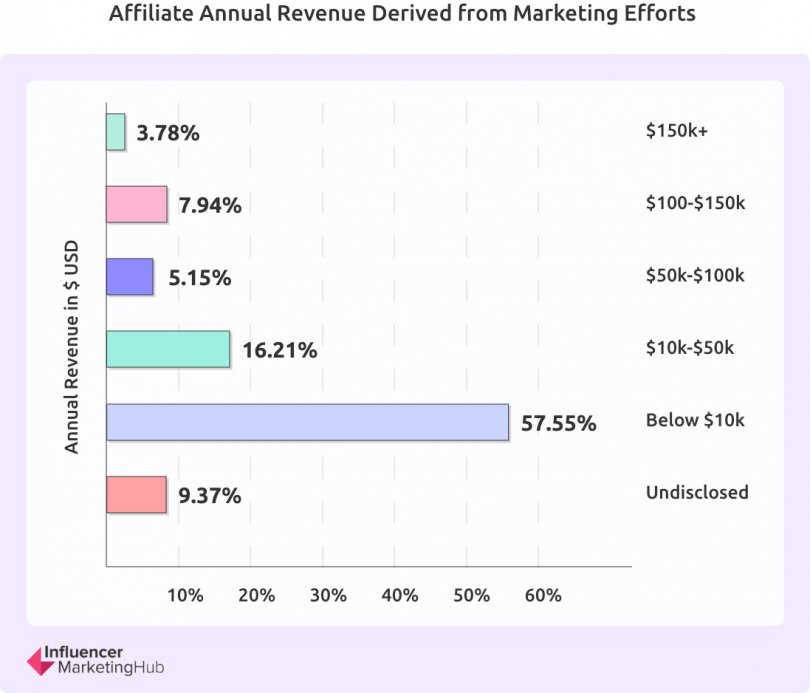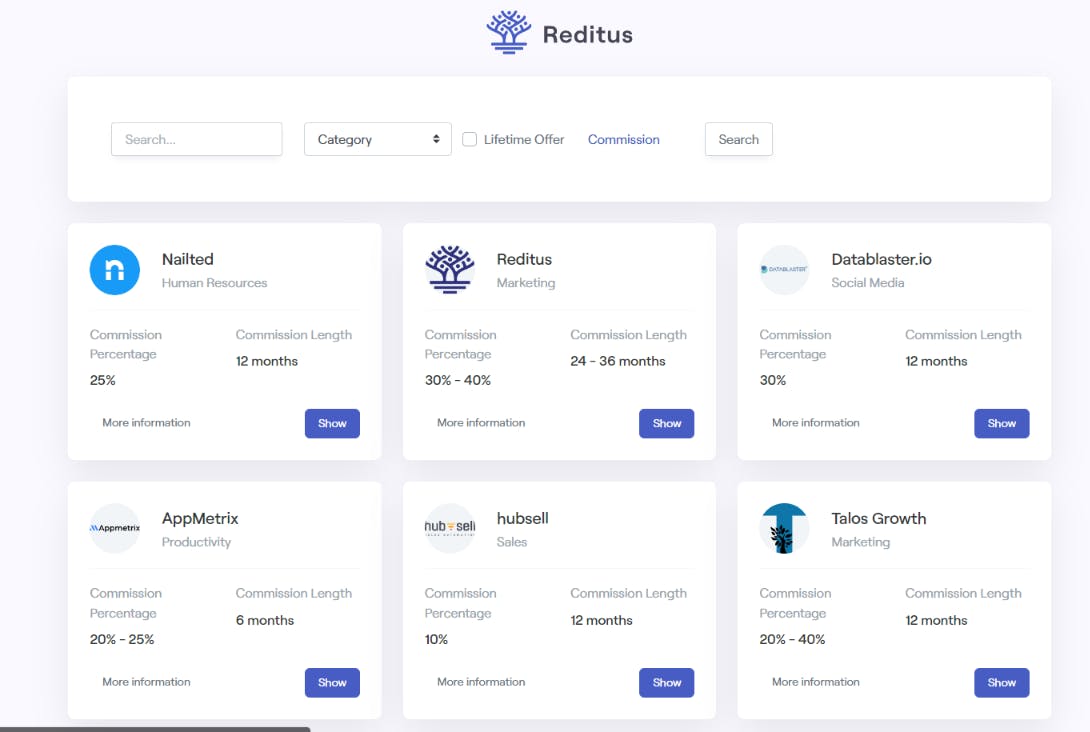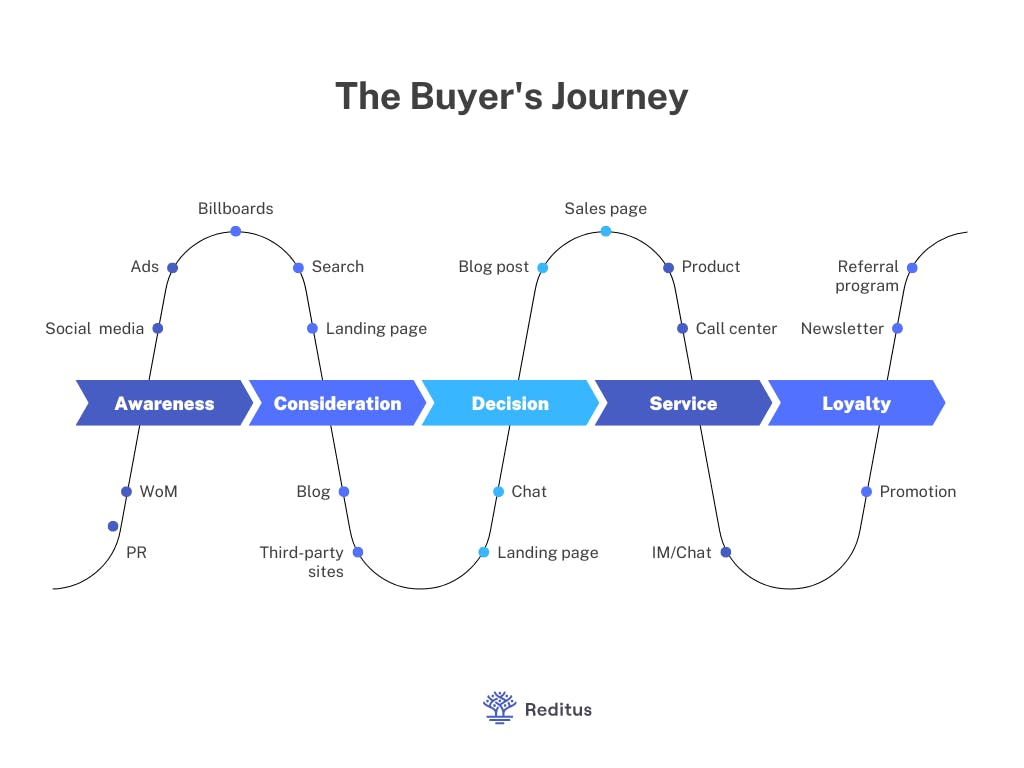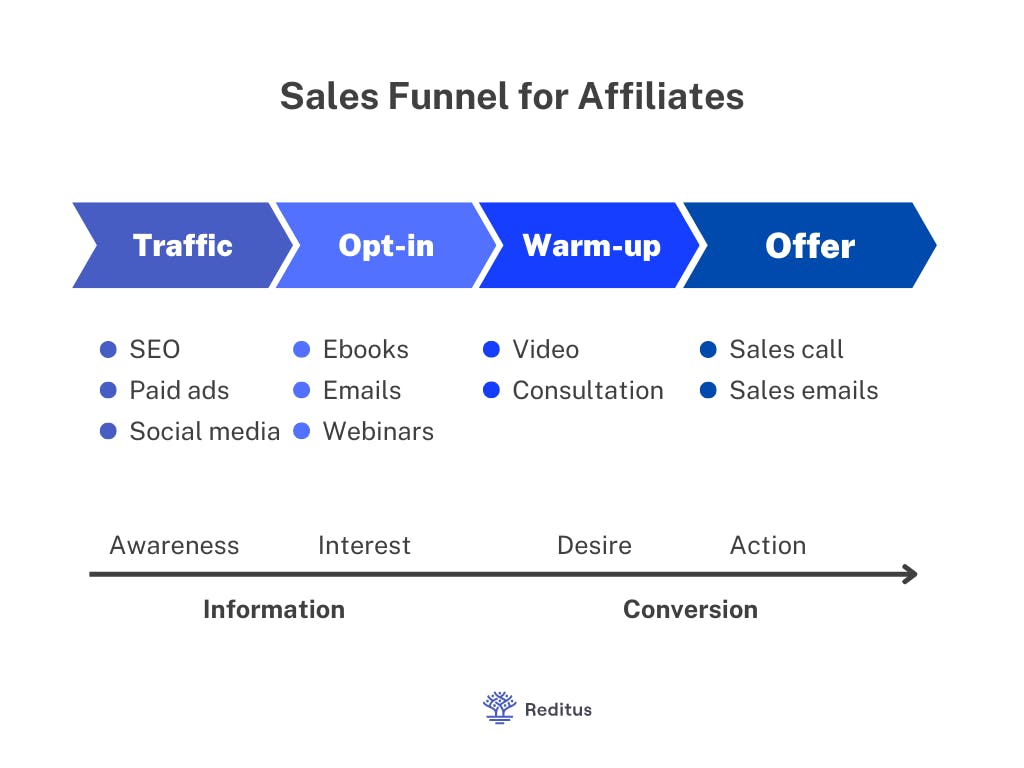Affiliate Marketing for Beginners: Make Your First Commission

You might not know where to start when you are a beginner in affiliate marketing. Making your first affiliate commission shouldn’t be mysterious or esoteric.
Your first sale involves proper knowledge, consistent effort, and a killer offer. Without these three elements, your affiliate journey can quickly turn into a fruitless wandering.
Although we can’t give you a comprehensive guide to becoming a successful affiliate (that would be an article in itself), we can provide some helpful marketing tips and pieces of advice that will help you get started on the right foot.
Let’s dive in.
What Is Affiliate Marketing?
Affiliate marketing is a business model where individuals, known as affiliates, earn commissions by promoting other people's or companies' products. These affiliates leverage their online presence, such as blogs, social media platforms, email lists, and affiliate websites, to recommend and endorse affiliate products. When someone makes a purchase through their unique affiliate link, the affiliate earns a commission.
To get started in affiliate marketing, you can join an affiliate network like Reditus, which acts as a bridge between new affiliates and merchants. These networks provide a wide range of affiliate products from various industries, allowing affiliates to choose products that align with their niche and target audience. Also, check out Affilisting for a massive list of affiliate programs on the market, including the ones from our network.
For bloggers, affiliate marketing offers an excellent opportunity to monetize their content. By strategically incorporating affiliate links into their blog posts, bloggers can earn passive income while providing valuable information to their readers. Successful bloggers often share step-by-step tutorials, reviews, and recommendations, optimizing their content for conversions.
Affiliate marketing is not limited to bloggers alone; social media platforms have become a thriving space for affiliates as well. Influencers and content creators on platforms like Instagram, YouTube, and TikTok leverage their large followings to promote affiliate products to their audience. This opens up new avenues for individuals to create their own affiliate marketing business, reaching a wide range of potential customers.
Becoming an affiliate merchant and starting your own affiliate marketing program can be an exciting venture that offers numerous opportunities for growth and success. If you're eager to tap into the world of affiliate marketing and make it work for you, here are some essential steps to consider.
Learn how Affiliate Marketing works
First and foremost, familiarize yourself with how affiliate marketing works. Understand the dynamics of affiliate marketing programs and the roles of affiliates, referral links, and commission rates. Platforms like Amazon Associates and ClickBank are popular choices for merchants to manage their affiliate programs and connect with potential affiliates.
Develop well-defined strategy
To start your affiliate marketing program, it's crucial to have a well-defined strategy. Determine your target audience, identify suitable affiliate partners, and establish commission structures that align with your business goals. Metrics such as conversion rates and referral tracking will help you measure the success of your program and make informed decisions.
Why Do Most Affiliates Never Make Any Affiliate Sales?
Because selling is tough. It requires a deep understanding of psychology, marketing, and human behavior.
Affiliate marketing is a super competitive industry with millions of people vying for attention. To make a sale, you need to stand out from the crowd and find a way to connect with your audience on a personal level.
Most affiliates think that all they need to do is find a hot product and start promoting it. But if that was the case, everyone would be doing it and making money. Still, roughly 58% of affiliates make less than $10,000 per year according to Influencer Marketing Hub data—$833 per month, to be exact.

It's a bit like saying, "I want to be an actor," and thinking that the only thing you need to do is show up on set. It's not quite that simple.
The truth is that becoming a successful affiliate takes time, effort, and a lot of learning. It's not something you can do overnight.
And even if you do everything right, there's no guarantee you'll make a sale.
Thus, the first step to becoming a successful affiliate is to accept that selling is hard and that it's going to take some time before you see results.
Let's look at some practical ideas to make your first commission.
How to start affiliate marketing to earn your first commission
1. Read These Five Books
Again, selling is hard. To be successful, you need to educate yourself and learn from the best. Although reading won’t guarantee you success, it will give you a solid foundation to build upon.
The good news is that most people won’t bother reading books. They’ll just try to wing it and hope for the best. If you’re willing to do the work, you’ll already be ahead of most affiliate marketers.
Some excellent books on selling, marketing, and strategy are:
- Breakthrough Advertising by Eugene Schwartz. This book is over 50 years old but still relevant today. It will teach you how to write persuasive copy that sells.
- Influence: The Psychology of Persuasion by Robert B. Cialdini. This book is essential reading for anyone in sales or marketing. It will teach you the psychological principles that drive people to take action.
- The Lean Startup by Eric Ries. This book will teach you how to validate your ideas and build a successful business.
- SPIN Selling by Neil Rackham. This book is a classic in the sales world. It will teach you how to structure your sales conversations for maximum impact.
- The Innovator’s Dilemma by Clayton M. Christensen. This book will teach you when to enter new markets and how to succeed in them.
This isn’t a comprehensive list by any means, but it will get you started in the right direction.
2. Choose One Channel and Stick to It
Most affiliates try to be everywhere at once. They create a Twitter account, start a blog, and make videos on YouTube channel—all while promoting their affiliate products.
The problem is that they spread themselves too thin, and as a result, they don’t see any results.
It’s much better to focus your efforts on one channel and then expand to others once you’ve seen some success.
Consider your inherent strengths and weaknesses. If you’re a good writer, focus on text. If you’re good on camera, make videos.
Some channels adapt better to specific skills and personality types than others.
For example, Twitter and Instagram are better for people who are quick thinkers and have no problem churning out content regularly. Blogging might be better if you prefer to take your time and produce long-form content.
Platforms like TikTok and Snapchat are well-suited for creative people who enjoy making videos.
The key is to focus on one channel at first. This will allow you to put all your effort into creating high-quality and engaging content.
Once you’ve seen some success, you can expand to other channels.
3. Produce Content Daily
Building a loyal audience is the ultimate dream of every affiliate marketer. It’s also the key to making sales.
The challenge is to produce high-quality and exciting content to get people to keep coming back for more.
This is where most affiliates fail. They either produce content that’s not interesting, or they don’t stick to a consistent schedule.
As a result, their audience dwindles, and they never make any sales.
To prevent this from happening to you, commit to producing content every day. This doesn’t mean you need to churn out low-quality content just for the sake of it.
Instead, focus on creating content that is genuinely helpful and interesting. If you do this, your audience will grow organically, and you’ll eventually make sales.
An excellent strategy to help you stay consistent is to batch produce content. This means creating a bunch of content at once and then scheduling it over a few weeks or months.
This will help you stay on track and continuously create new content.
For example, instead of creating 10 different videos, you could record a 1-hour long webinar. Then, you can repurpose that webinar into 10 other videos you can post over the next month.
You could also turn that webinar into a podcast or an ebook. The possibilities are endless.
By batch-producing content, you’ll save yourself a lot of time and effort in the long run.
4. Choose the Right Product
This point might seem obvious, but it’s worth mentioning.
You’d be surprised how many affiliates choose the first product they see and start promoting it without doing any research. While this might seem like a good strategy at first, it’s actually one of the worst things you can do.
When selecting your affiliate product, consider the industry.
Some industries are more lucrative than others.
For instance, the commission for SaaS products is usually higher than for physical products. Some companies pay up to 50% commission for every sale.
Also, SaaS companies often offer recurring commissions. You’ll get a commission every time someone renews their subscription.
Physical products tend to have lower commissions, but they can still be profitable.
The key is to choose an industry that you’re interested in. This way, you’ll be more likely to stick with it and see results.
5. Diversify Your Affiliate Portfolio
Instead of relying on one product, adopt a product diversification strategy. This means finding multiple products that complement each other.
For example, let’s say you’re promoting a web hosting service. An excellent complementary product would be a WordPress theme.
By promoting multiple products, you’ll be able to reach a wider audience and make more sales.
Besides, it’s always good to have multiple streams of affiliate income. If one product tanks, you’ll still have others to fall back on.
Affiliate marketplaces can help you find the best products to promote.
Reditus, for example, helps you find the top affiliate programs in the SaaS industry. You can filter the programs by the commission, category, and other criteria.

Reditus helps you join and manage multiple programs in one place, so you don't have to go through the hassle of signing up for each individual program. This is a huge time-saver.
6. Understand the Buyer’s Journey
Every customer follows a specific journey when they’re making a purchase. This is known as the buyer’s journey.

There are five stages in the buyer’s journey:
- Awareness
- Consideration
- Decision
- Purchase
- Retention
Each stage requires a different type of content.
To turn strangers into customers, you must understand the buyer’s journey and create content that leads them through each stage.
For example, at the awareness stage, customers are just becoming aware of their problem. They don’t yet know that your product exists.
Your goal at this stage is to educate them about their problem and show them that there’s a solution.
You can create blog posts, infographics, and other types of content that raise awareness about the problem.
Research suggests that affiliates capture 83% of customers during the awareness stage, while 79% are captured during the decision stage.
What does this mean for you?
To capture the most significant number of customers, you must create content for each stage of the buyer’s journey.
Instead of creating random content, map out a content strategy that leads customers from the awareness stage to the purchase stage.
For example, your content strategy might look something like this:
- Awareness: blog posts, infographics, ebooks, landing pages
- Consideration: webinars, courses, case studies
- Decision: product reviews, testimonials, coupons
- Purchase: thank-you pages, email marketing follow-ups
- Retention: loyalty programs, customer support

By mapping out your content strategy, you’ll be able to create content that leads customers through the buyer’s journey and increases your chances of making a sale.
7. Adopt a Content-First Approach
We’ve already talked about the importance of creating content to attract customers. But content is more than just a piece of marketing collateral. It’s the gravitational force that pulls customers through the buyer’s journey.
In other words, your content should be the driving force behind your affiliate marketing strategy.
Content should be at the center of everything you do. Every blog post, social media update, and email should revolve around your content.
Take VPNGuru, for example.

VPNGuru is an affiliate site that promotes VPN products. But instead of just promoting the products, they provide in-depth reviews and comparisons.
If you read one of their reviews, you’ll quickly see that they’re not just trying to make a quick sale. They’re genuinely interested in helping their readers find the best VPN for their needs.
This content-first approach has helped VPNGuru build a loyal following and generate consistent sales.
To adopt a content-first approach, identify the overarching strategy that will guide all your efforts.
A review site like VPNGuru relies heavily on SEO to attract organic traffic. So, their overarching strategy is to produce high-quality content that ranks well in search engines.
As a result, they create in-depth reviews, comparisons, and other types of content based on high-intent keywords and common questions their audience is searching for.
Your overarching strategy might be different. But no matter what it is, make sure that all your content is aligned with it.
For instance, you might create a webinar that leads to a free mini-course. You can then promote different products throughout the course to help users solve their specific problems.
Ultimately, by adopting a content-first approach, you’ll be able to create a more cohesive experience for your audience and increase the likelihood of making sales.
How much can a beginner make in affiliate marketing?
Are you curious about the earning potential for beginners in affiliate marketing? It's a common question that arises when people embark on their affiliate marketing journey. While there is no definitive answer due to various factors that influence success, it's important to have a realistic understanding of what beginners can expect.
Starting as a beginner affiliate marketer requires patience, effort, and dedication to build a thriving affiliate business. Initially, income may be modest as you navigate the learning curve and establish your online presence.
Earnings in affiliate marketing can vary significantly based on several factors. The niche you choose, the products or services you promote, your marketing strategies, and the size and engagement of your audience all play a role. Beginners may earn a few hundred dollars per month, while others may reach a few thousand, depending on these factors.
It's crucial to remember that affiliate marketing is not a quick path to riches. It demands consistent effort in creating valuable content, growing an audience, and implementing effective marketing strategies. As you gain experience, refine your approach, and expand your online presence, your potential for higher earnings increases.
Follow These Steps To Make Your First Affiliate Commission
Remember, affiliate marketing is a marathon, not a sprint.
It takes time to find the right products, build an audience, and generate sales. But if you’re patient and follow the tips in this post, you’ll be able to make your first commission much faster.
Ultimately, it all comes down to creating content that educates and inspires your audience. If you can do that, you’ll be well to becoming a successful affiliate marketer.

